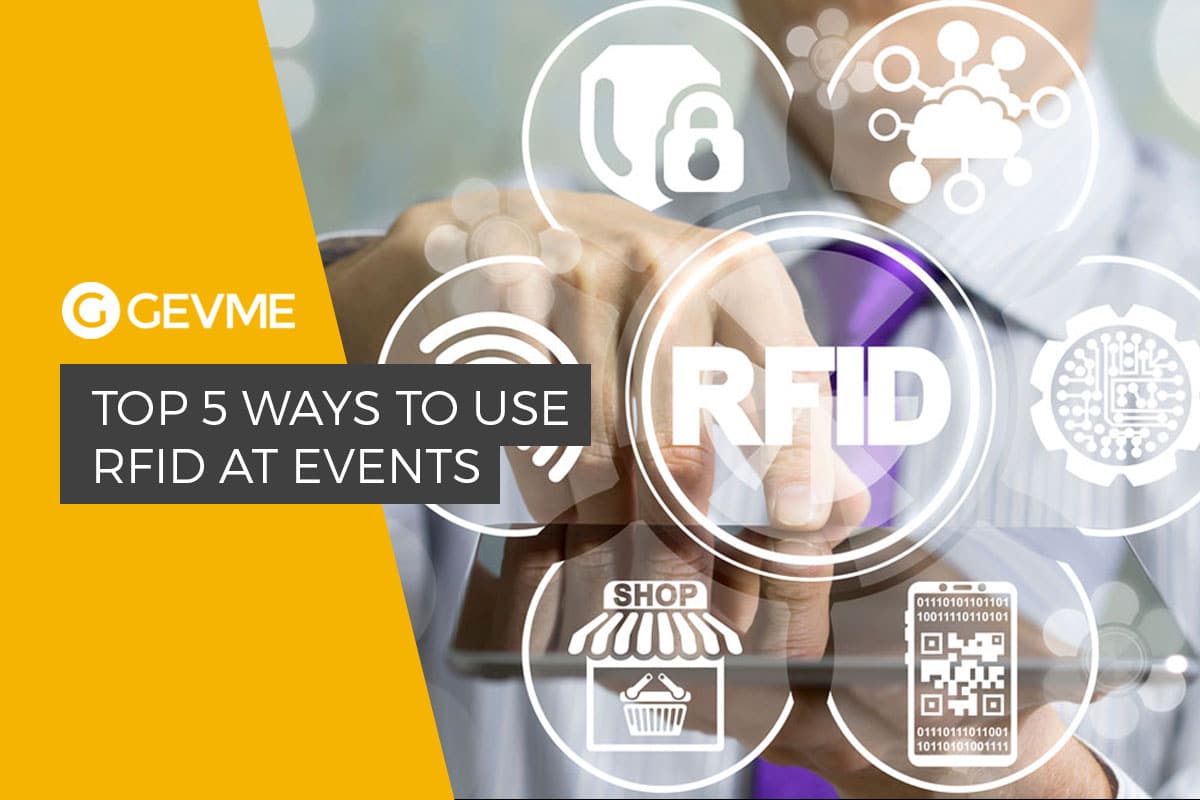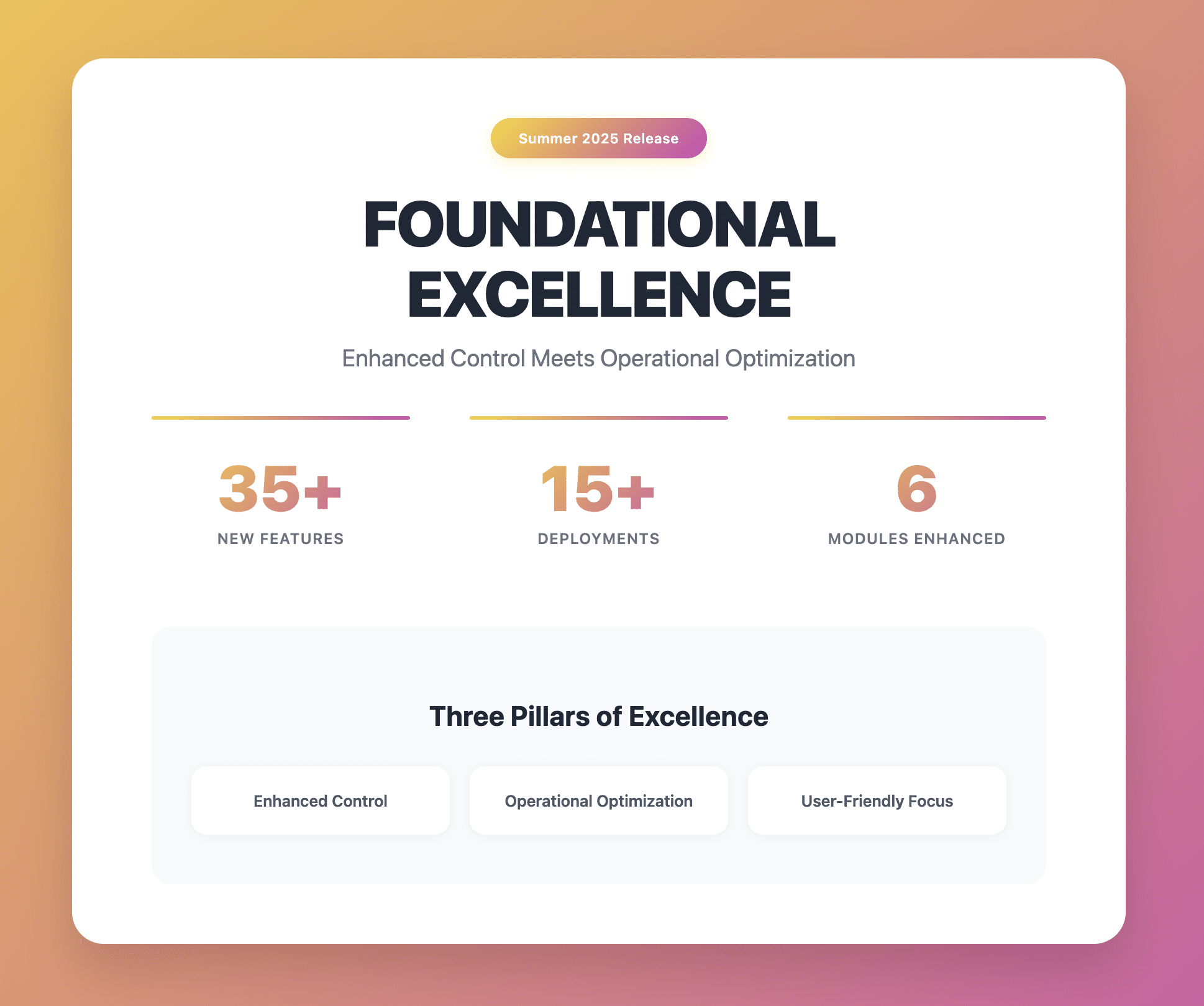The scope of RFID usage is constantly expanding. The technology is in demand in many industries, including at events, where the control of moving objects, intelligent automation solutions, and an ability to work in harsh environments with accuracy, speed, and reliability are all required.
What is RFID?
RFID (Radio Frequency Identification) is a contactless data exchange technology based on the use of radio frequency electromagnetic radiation. RFID technology for events is used to automatically identify and track attendees throughout the venue.
How does RFID technology work?
An RFID tag is a miniature memory device. RFID tagging consists of a microchip that stores information and an antenna, which enables the tag to transmit and receive data. Sometimes an RFID tag has its own power source (active), but most tags do not need external power (passive).
A unique number and information are stored in the memory of each RFID tag. When a tag enters the registration area, this information is received by the RFID reader.
Passive RFID tags use reader field energy to transmit data. After accumulating the required amount of energy, the label begins to transfer. The distance needed for the registration of passive tags is about 0.05 – 8 meters, depending on the type of RFID reader and the tag architecture.
What events does this technology fit?
RFID entry systems are best suited for large-scale events with a limitless number of attendees and registrations. RFID attendee tracking systems make use of RFID technology to store useful information for various types of events, including the following:
- Trade shows
- Conferences
- Exhibitions
- Competitions
- Other corporate events
- Any large-scale gatherings
RFID tags can also be used to transfer other event data, such as event tickets, feedback, competitions, entertainment or gamification tactics, etc.
Benefits of using RFID for events
RFID technology in events management has a broad range of benefits for both the attendees and organisers.
The RFID tag data can be overwritten and padded many times, whereas the data on the barcode remains unchanged; it is recorded immediately when printed.
The RFID reader does not need a direct line of radio frequency to read its data. The mutual orientation of the tag and the reader does not matter. Labels are readable through packaging, which also makes hidden placement possible. To read the data, the label is enough to get into the registration area, even when moving at a high speed. However, the barcode reader needs direct visibility of the barcode for reading.
The RFID tag can be read at a significantly greater distance than the barcode. Depending on the model of the tag and the reader, the reading radius is up to several meters.
The RFID tag can store much more information than a barcode. Up to 10,000 bytes can be stored on a 1 cm² microcircuit. Industrial RFID readers simultaneously read dozens of RFID tags per second using the anti-collision function.
5 ways to use RFID at your event
Here are just a few ideas that you might consider when using RFID at your next event.
Badges can provide a “key” for your event, enabling attendees to access event information for themselves at their fingertips. Organisers track where attendees have been and which sessions they have visited, etc. In a nutshell, all useful data is easily at their disposal.
- Table/seating plans
Make it easy for your attendees to find their tables or seats at events. Give them an easy-to-follow interactive seating plan on your event webpage, and direct them via onsite kiosks during the event using RFID.
- Competitions
Here, RFID technology can be used to store the demographic data about teams or various participants while also boosting data points where people scan their badges to earn points and exchange them for tickets, etc.
- Customer support
Let your attendees feel safe while hunting for treasures by answering their questions. Use clue-type questions on tablets. Also avoid emergency situations through the use of RFID tracking. The technology is flexible, giving you the option of holding your event both indoors and outdoors.
- Lead generation
By swiping a visitor’s RFID badge on a tablet, an organiser can use that badge to provide live data about visitors that have visited essential stands during the event. Immediate event promotion and tracking of its success are available via RFID.
Discover the Top 5 Advantages of Leveraging an RFID Tag for Events.
Event management and RFID
For automatic event management on site and RFID attendee tracking, RFID tags have increased durability and resistance to harsh environmental conditions. In those areas where the same object is used many times, the RFID tag is the best means of identification since it does not require placement on the outside of the package. Passive RFID tags are unlimited, so technology can cope with an unlimited number of attendees.
RFID system solutions
RFID tags are used not only as keepers of information but also as intelligent devices with a wide range of applications and a unique identifier. RFID solutions for events can be embedded in any movable or static objects for an event (e.g., T-shirts, watches, keys, cards, labels, brand walls, social walls, floors, etc.), all of which provide greater event coverage.
The immutable identifier assigned to the label during the event production ensures that the tags are protected from tampering during the entire event lifecycle. The data on the label can be easily encrypted. As a digital device, the radio frequency tag is password protected and encrypted, if necessary, for secure data management and data protection. In the same tag, you can simultaneously store open and closed data, which makes RFID easy to integrate and so much more.
How to integrate RFID technology
So you want to know how to use RFID at events so it can be integrated for the best results? RFID data can be integrated into enterprise computer systems and any tracking application; it can be connected to mobile devices via apps or combined with a barcode or similar tracking methods. Combine RFID with your event logistics plan as accurate information is needed to properly manage food, décor, the florist, and other supply chains.
Performance evaluation
One of the most effective ways to use RFID at events is in performance evaluation A UHF RFID performance evaluation for real-time attendee tracking in intelligent event management systems is based on traces from software to track and evaluate performance during events. To perform credible evaluations, either an anechoic chamber or parallel processing of different reader software at the SDR level is used. All results are easily stored and may be transferred for event reporting and further marketing, planning, and scheduling.
Tips for getting the most from RFID
Here are some pro tips for getting the best possible results from subbing RFID tags at your events.
Antenna gain
Use higher gain antennas if you need more read range. If you need less read range, use lower gain antennas accordingly. If you need to read tags up close, use very low gain proximity antennas.
Tag SOAP
To get the best range from any RFID tag, ensure that the tag is fully facing the antenna; pay particular attention to your tag orientation while using linearly polarised antennas.
Reader settings
Configure your reader setting to fit your needs. Also, in order to maximise read range, ensure that your reader is set to its highest receiving sensitivity. Higher power settings will result in greater read range. Accordingly, lower power settings result in a decreased read range.
Cable Length, multiplexers, and adapters
Don’t forget that the longer the cable, the higher the signal loss. Using adapters and/or multiplexers may insert some extra loss into your RFID system.
Environmental peculiarities
Many environmental factors can affect the read range. Make sure to account for various types of interference and test them twice! Keep this in mind when running outdoor events.
Contact us for more comprehensive information on the use of RFID in the event industry and ways you can integrate it into your business.
Conclusion
The integration of RFID technology in any large-scale event is a complex process. First of all, decide which processes you wish to automate using RFID in the enterprise. Choose a manufacturer of RFID tags and equipment in your region. There are various RFID projects in various business areas on the market. Be sure to follow these tips, and don’t forget to evaluate the success of the event using your personal RFID tags.








